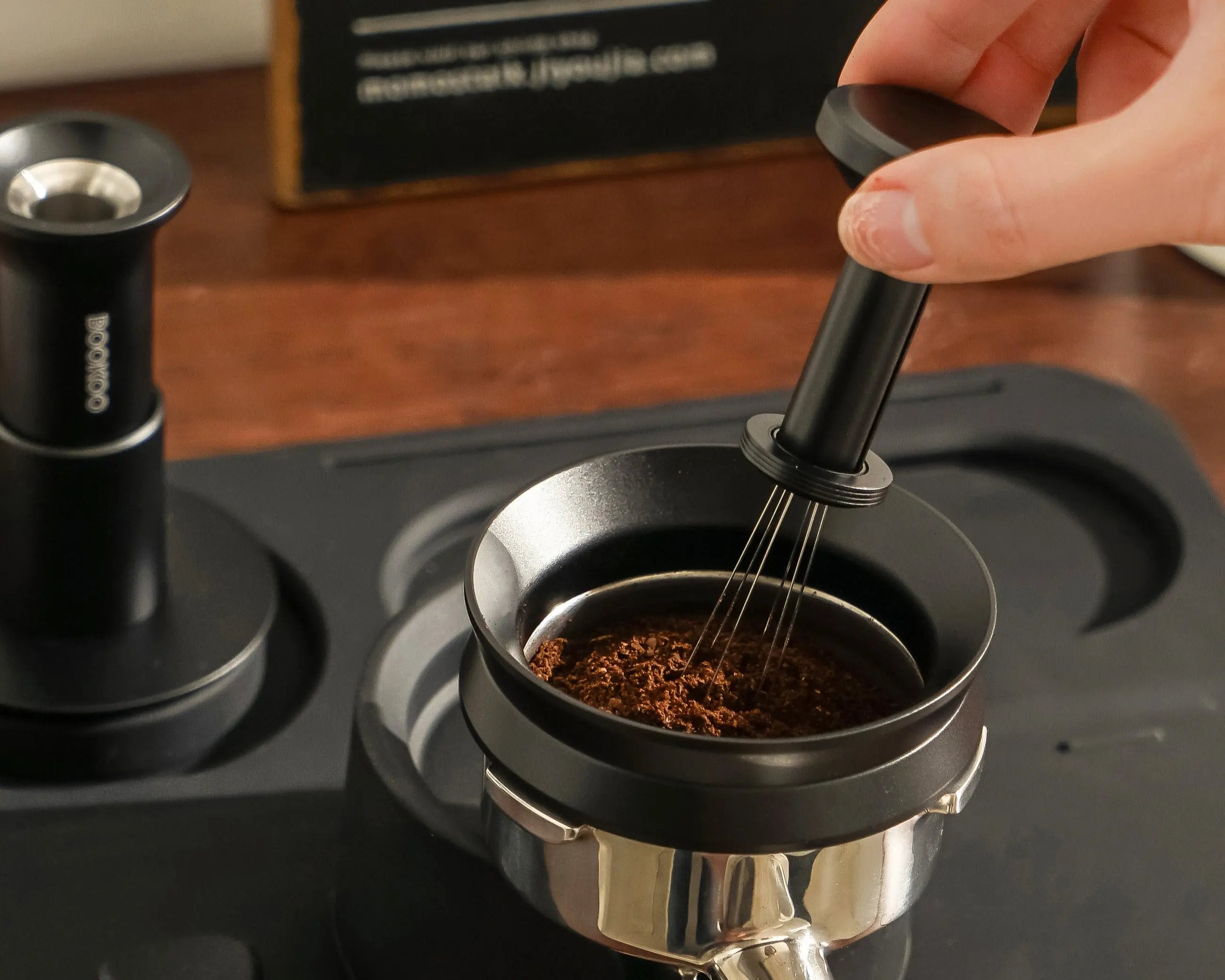How Much Caffeine Is in Your Coffee?
We all love that morning jolt that gets us going, but have you ever wondered exactly how much caffeine is in your daily cup of joe? Whether you're trying to moderate your caffeine intake, maximize your energy boost, or just satisfy your curiosity, understanding caffeine content can help you make more informed choices about your coffee consumption.

Table of Content
-
Understanding Caffeine Basics
- Caffeine Content by Coffee Type
- Factors That Affect Caffeine Levels
- Decaf Coffee: Is It Really Caffeine-Free?
- Recommended Daily Caffeine Intake
- Conclusion
- FAQs
Understanding Caffeine Basics

Caffeine is a natural stimulant most commonly found in coffee, tea, and cacao plants. It works by stimulating the brain and central nervous system, helping you stay alert and preventing the onset of tiredness.
For coffee lovers, caffeine is often the primary reason for that morning cup—but caffeine content can vary dramatically depending on several factors. A standard 8-ounce (240ml) cup of brewed coffee typically contains about 95mg of caffeine, but this is just an average.
Caffeine Content by Coffee Type
Different brewing methods and coffee types yield varying levels of caffeine. Here's a breakdown of caffeine content table for different types of coffee:
|
Drink Type
|
Caffeine per Serving
|
Size of Cup
|
Caffeine per oz
|
|
Espresso (single shot)
|
60 – 72
|
1 – 1.25
|
60 – 70
|
|
Espresso (double shot)
|
120 – 133
|
2 – 2.25
|
60 – 70
|
|
Drip coffee
|
65 – 120
|
8
|
8 – 15
|
|
Americano
|
120 – 133
|
8
|
15 – 17
|
|
Long Black
|
120 – 133
|
6
|
20 – 22
|
|
French Press
|
100 – 137
|
8
|
13 – 17
|
|
Latte
|
120 – 133
|
12
|
10 – 11
|
|
Cappuccino
|
60 – 72
|
6
|
12 – 14
|
|
Decaffeinated coffee
|
2 – 3
|
8
|
0.25 – 0.37
|
|
Cold Brew
|
197 – 213
|
16
|
12 – 13
|
|
Pour Over
|
90 – 160
|
8
|
12 – 20
|
|
Instant Coffee
|
60 – 80
|
8
|
8 – 10
|
|
Turkish Coffee
|
70 – 80
|
2
|
30 – 40
|
Data source: National Coffee Association NCA, USDA Food Data Central
Factors That Affect Caffeine Levels

Several variables influence how much caffeine ends up in your cup:
-
Coffee Bean Type
The two main commercial coffee species are:
-
Arabica: Generally contains less caffeine (approximately 1.2% caffeine content)
-
Robusta: Contains almost double the caffeine of Arabica (approximately 2.2% caffeine content)
Most specialty coffees use Arabica beans, while many commercial brands and instant coffees include Robusta for its higher caffeine content and stronger flavor.
-
Roast Level
Contrary to popular belief, light roasts actually contain slightly more caffeine than dark roasts. This is because the roasting process burns off a small amount of caffeine. However, dark roasts may taste "stronger" due to their more intense flavor profile.
-
Brewing Method
The extraction method significantly impacts caffeine content:
-
Longer extraction times (like cold brew) generally yield higher caffeine content
-
Higher water temperatures extract caffeine more efficiently
-
Finer grinds increase the surface area, allowing for more caffeine extraction
Decaf Coffee: Is It Really Caffeine-Free?

Despite its name, decaffeinated coffee isn't completely caffeine-free. The decaffeination process typically removes about 97% of caffeine, meaning a standard 8oz cup of decaf still contains around 2-7mg of caffeine. While this amount is negligible for most people, those who are extremely sensitive to caffeine should be aware.
Recommended Daily Caffeine Intake

According to the FDA and many health organizations, healthy adults can safely consume up to 400mg of caffeine per day—equivalent to about 4-5 cups of regular coffee. However, pregnant women are typically advised to limit caffeine to 200mg daily (about 2 cups of coffee).
Individual tolerance varies significantly based on:
-
Body weight
-
Metabolism
-
Existing health conditions
While caffeine is generally safe for most people in moderate amounts, exceeding your personal tolerance can lead to unpleasant side effects, such as increased anxiety, rapid heartbeat, difficulty sleeping and feeling dizzy.
If you experience these symptoms, consider reducing your caffeine intake or spreading it more evenly throughout the day.
Conclusion
Coffee is personal. There's no "one-size-fits-all" when it comes to caffeine. The key is understanding your body, your schedule, and what each drink brings to the table. Whether you're dialing down your intake or chasing that bold espresso buzz, knowing your options helps you savor your coffee smarter.
FAQs
How long does caffeine stay in your system?
The half-life of caffeine is approximately 5-6 hours for most healthy adults. This means that if you consume 100mg of caffeine at noon, you'll still have about 50mg in your system around 5-6pm. Complete elimination can take up to 10 hours.
Does adding milk or sugar affect caffeine content?
No, adding milk, cream, sugar, or flavorings doesn't alter the caffeine content of your coffee. However, these additions may affect how quickly your body absorbs the caffeine.
Is morning the best time to drink coffee?
For many people, the optimal time for coffee is mid-morning (around 9:30-11:30am) rather than immediately after waking. This is because your body's cortisol levels are naturally higher in the early morning, and adding caffeine during this time may be less effective and potentially contribute to increased caffeine tolerance.



Share:
How to Choose a Coffee Scale for Flair 58 and Cafelat Robot Users
Unlocking Espresso’s Secrets: Techniques, Ratios, and Rituals for Beginners